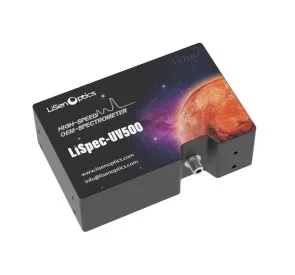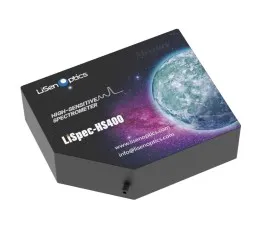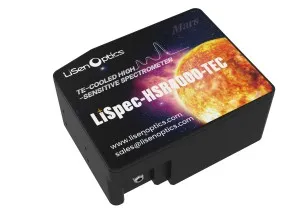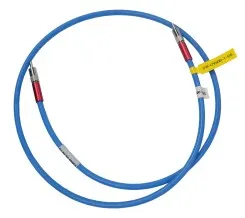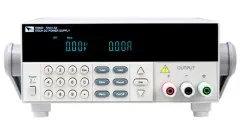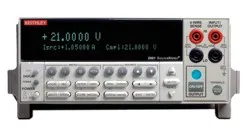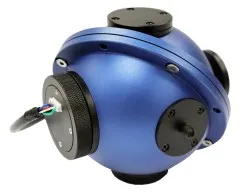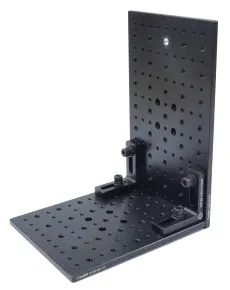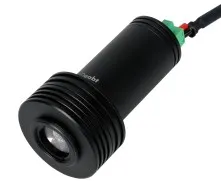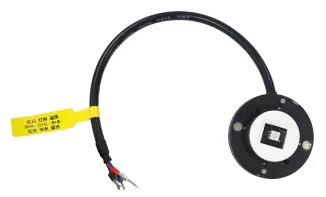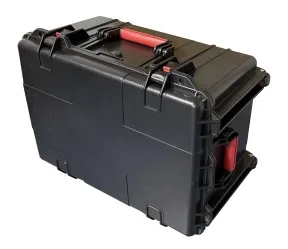Focus on spectral sensing and optoelectronic application systems
Electroluminescence Quantum Efficiency Spectrometer (EL-QE)
The iSpecEQE Electroluminescent Quantum Efficiency Spectroscopy System from LiSen Optics is an important member of the comprehensive photoluminescence characteristic measurement platform. It is specifically designed to effectively measure the optoelectronic properties of light-emitting devices. The system includes a spectrometer, a radiation-calibrated light source integrating sphere, a current source meter, a probe station, optical fibers, and fixtures. The spectrometer features a high signal-to-noise ratio, low stray light, and a large dynamic range, making it suitable for measuring excitation and emission light of different wavelengths and intensities, ensuring the accuracy of measurement results. Additionally, the system is equipped with powerful dedicated testing software that has a simple operation logic and quick testing process.
The iSpecEQE Electroluminescent Quantum Efficiency Spectroscopy System from LiSen Optics is an important member of the comprehensive photoluminescence characteristic measurement platform. It is specifically designed to effectively measure the optoelectronic properties of light-emitting devices. The system includes a spectrometer, a radiation-calibrated light source integrating sphere, a current source meter, a probe station, optical fibers, and fixtures. The spectrometer features a high signal-to-noise ratio, low stray light, and a large dynamic range, making it suitable for measuring excitation and emission light of different wavelengths and intensities, ensuring the accuracy of measurement results. Additionally, the system is equipped with powerful dedicated testing software that has a simple operation logic and quick testing process.
Product Introduction
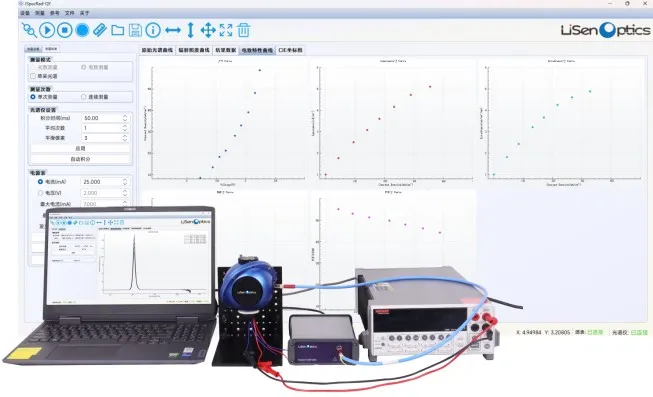
Basic Principle
Electroluminescence (EL) is a physical phenomenon where an electric field created by voltage applied across two electrodes excites electrons to collide with luminescent centers, causing electrons to jump between energy levels, change, and combine, resulting in luminescence. Electroluminescent products are known for their high luminous efficiency, long device life, fast response speed, good viewing angle characteristics, strong chromaticity, low cost, flexibility, and wide application prospects in displays and lighting. The performance of electroluminescent products is mainly determined by electroluminescent devices, such as OLEDs and QLEDs. These devices typically consist of five layers: a cathode, an electron transport layer, an emissive layer, a hole transport layer, and an anode. The material of the emissive layer is called the electroluminescent material, with organic molecular materials in OLED devices and quantum dot materials in QLED devices.
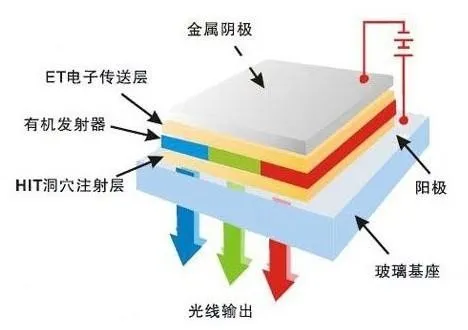
Electroluminescent Device Structure
The external quantum efficiency (EQE) of an electroluminescent device is one of the key parameters determining the luminous efficacy of the device after packaging and is crucial for the commercialization of electroluminescent devices. It reflects the efficiency of converting electrical energy into light, indicating the utilization rate of input power. Higher luminous efficiency means lower thermal loss and higher energy utilization. In the research of electroluminescent devices, the corresponding parameter is the external quantum efficiency (EQE).
Common EQE Measurement Methods
Luminance Meter Method: Measures the luminance in the normal direction using a luminance meter and calculates the device's EQE based on the standard Lambertian distribution theory. This method has significant drawbacks as the Lambertian distribution of actual devices is not always standard, leading to inaccurate theoretical calculations.
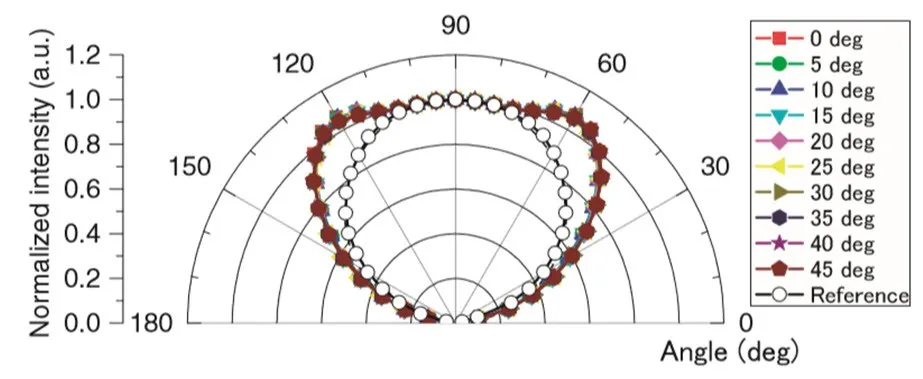
Difference Between Photometric Distribution Test Values and Lambertian Predicted Values
Integrating Sphere Method: Collects the total luminous flux of the device and calculates the EQE. There are two measurement schemes: the 2π method, which measures only the forward flux by placing the device on the sphere wall, and the 4π method, which measures the total flux by placing the device inside the sphere.
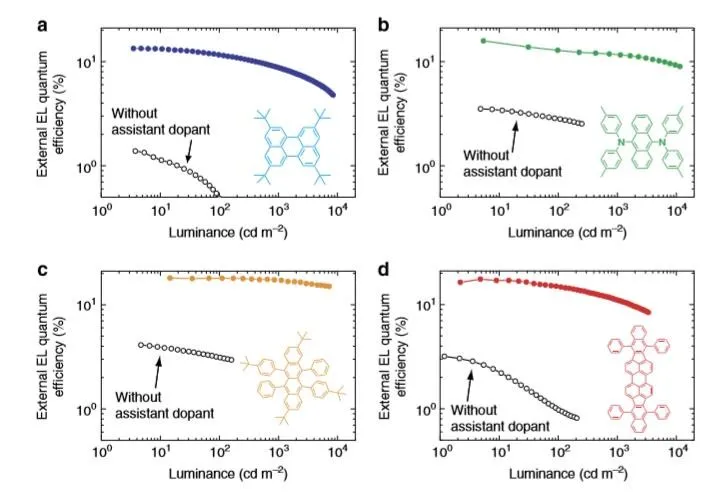
Integrating Sphere EQE Test Results Example: OLED electroluminescent devices in four colors
![]()

Basic Principle
Electroluminescence (EL) is a physical phenomenon where an electric field created by voltage applied across two electrodes excites electrons to collide with luminescent centers, causing electrons to jump between energy levels, change, and combine, resulting in luminescence. Electroluminescent products are known for their high luminous efficiency, long device life, fast response speed, good viewing angle characteristics, strong chromaticity, low cost, flexibility, and wide application prospects in displays and lighting. The performance of electroluminescent products is mainly determined by electroluminescent devices, such as OLEDs and QLEDs. These devices typically consist of five layers: a cathode, an electron transport layer, an emissive layer, a hole transport layer, and an anode. The material of the emissive layer is called the electroluminescent material, with organic molecular materials in OLED devices and quantum dot materials in QLED devices.

Electroluminescent Device Structure
The external quantum efficiency (EQE) of an electroluminescent device is one of the key parameters determining the luminous efficacy of the device after packaging and is crucial for the commercialization of electroluminescent devices. It reflects the efficiency of converting electrical energy into light, indicating the utilization rate of input power. Higher luminous efficiency means lower thermal loss and higher energy utilization. In the research of electroluminescent devices, the corresponding parameter is the external quantum efficiency (EQE).
Common EQE Measurement Methods
Luminance Meter Method: Measures the luminance in the normal direction using a luminance meter and calculates the device's EQE based on the standard Lambertian distribution theory. This method has significant drawbacks as the Lambertian distribution of actual devices is not always standard, leading to inaccurate theoretical calculations.

Difference Between Photometric Distribution Test Values and Lambertian Predicted Values
Integrating Sphere Method: Collects the total luminous flux of the device and calculates the EQE. There are two measurement schemes: the 2π method, which measures only the forward flux by placing the device on the sphere wall, and the 4π method, which measures the total flux by placing the device inside the sphere.

Integrating Sphere EQE Test Results Example: OLED electroluminescent devices in four colors
![]()
Typical Applications
● Inorganic/Organic Electroluminescence
● Molecular Thin Film EL Devices
● AIE (Aggregation-Induced Emission) Materials
● Quantum Dot Light-Emitting Diodes (QLED), Organic Light-Emitting Diodes (OLED), Light-Emitting Diodes (LED), Perovskite Light-Emitting Diodes (PeLED), and other types of electroluminescent devices.
Technical Advantages and Features
● In-situ Measurement: Can be placed inside a glove box for in-situ measurements.
● Structural Stability: The device does not require frequent calibration.
● Professional Software: Feature-rich, simple to operate, and facilitates rapid testing.
● Spectrometer: The system uses a cooled CCD spectrometer with high signal-to-noise ratio, high sensitivity, and high measurement accuracy.
Main Technical Indicators
|
Model |
iSpecEQE-HR400 |
iSpecEQE-HS400 |
iSpecEQE-HSR4000TEC |
iSpecEQE-NIR4000-1.7TEC |
|
Spectrometer Type |
High-Resolution Spectrometer |
High-Sensitivity Spectrometer |
Scientific-Grade Thermoelectrically Cooled Spectrometer |
Cooled Near-Infrared Spectrometer |
|
Spectral Range |
200-1100nm |
200-1100nm |
200-1100nm |
900-1700nm |
|
Slit |
Standard 50μm (Other options: 100/200μm available) |
|||
|
ignal-to-Noise Ratio (SNR) |
600:01:00 |
500:01:00 |
12000:1 |
3000:1 (High Gain) 4700:1 (Low Gain) |
|
Detector |
Hamamatsu S11639, 2048-pixel linear CMOS |
S10420, 2048-pixel back-illuminated 2D CCD |
Hamamatsu S11820, thermoelectrically cooled, back-illuminated 2048-pixel 2D CCD |
Hamamatsu G11620, thermoelectrically cooled, 256-pixel linear InGaAs |
|
Cooling Temperature |
/ |
/ |
25°C below ambient temperature |
25°C below ambient temperature |
|
Integration Time |
0.5ms-65s |
7ms-60s |
5ms-24s |
100μs-10s |
|
Source Meter |
Keithley 2400, Channels: 1, Current: 0-1A, Voltage: 0-200V, Measurement Resolution: 1pA/100nV, Power: 20W |
|||
|
Optical Fiber |
UV optical fiber, 600μm core diameter, NA: 0.22, length: 1m, encapsulated in engineering silicone |
|||
|
Integrating Sphere |
3.3-inch 4-port integrating sphere, Spectral range: 200-2500nm, PTFE high reflectivity >98% |
|||
|
Radiation Calibration Halogen Lamp |
NIM traceable radiation calibration source, Spectral range: 350-1100nm, with irradiance distribution traceable calibration data, Voltage: 6V; Power: 5W; Phoenix terminal to banana plug 2-pin connector |
|||
|
Main Standard Accessories |
Integrating sphere mounting plate, Electroluminescence sample fixture (customizable) |
|||
|
iSpecQE Quantum Efficiency Software |
Software features: Measure electroluminescence quantum efficiency; Display absorbed electron count and emitted photon count; Select excitation peak and emission peak; Show energy density; Ammeter scanning mode; Perform single and continuous measurements; Electroluminescent characteristics curves: Voltage-current density, Current density-radiant brightness, Current density-radiant irradiance, Current density-quantum efficiency, Current density-power conversion efficiency (PCE); Control Keithley 2400 via software; Display raw spectrum and irradiance spectrum; Show CIE color coordinates; Show fluorescence color tristimulus values; Display chromaticity coordinates; Display fluorescent RGB colors; Show fluorescent color temperature; Data saving capabilities. |
|||
Typical Applications
● Inorganic/Organic Electroluminescence
● Molecular Thin Film EL Devices
● AIE (Aggregation-Induced Emission) Materials
● Quantum Dot Light-Emitting Diodes (QLED), Organic Light-Emitting Diodes (OLED), Light-Emitting Diodes (LED), Perovskite Light-Emitting Diodes (PeLED), and other types of electroluminescent devices.
Technical Advantages and Features
● In-situ Measurement: Can be placed inside a glove box for in-situ measurements.
● Structural Stability: The device does not require frequent calibration.
● Professional Software: Feature-rich, simple to operate, and facilitates rapid testing.
● Spectrometer: The system uses a cooled CCD spectrometer with high signal-to-noise ratio, high sensitivity, and high measurement accuracy.
Main Technical Indicators
|
Model |
iSpecEQE-HR400 |
iSpecEQE-HS400 |
iSpecEQE-HSR4000TEC |
iSpecEQE-NIR4000-1.7TEC |
|
Spectrometer Type |
High-Resolution Spectrometer |
High-Sensitivity Spectrometer |
Scientific-Grade Thermoelectrically Cooled Spectrometer |
Cooled Near-Infrared Spectrometer |
|
Spectral Range |
200-1100nm |
200-1100nm |
200-1100nm |
900-1700nm |
|
Slit |
Standard 50μm (Other options: 100/200μm available) |
|||
|
ignal-to-Noise Ratio (SNR) |
600:01:00 |
500:01:00 |
12000:1 |
3000:1 (High Gain) 4700:1 (Low Gain) |
|
Detector |
Hamamatsu S11639, 2048-pixel linear CMOS |
S10420, 2048-pixel back-illuminated 2D CCD |
Hamamatsu S11820, thermoelectrically cooled, back-illuminated 2048-pixel 2D CCD |
Hamamatsu G11620, thermoelectrically cooled, 256-pixel linear InGaAs |
|
Cooling Temperature |
/ |
/ |
25°C below ambient temperature |
25°C below ambient temperature |
|
Integration Time |
0.5ms-65s |
7ms-60s |
5ms-24s |
100μs-10s |
|
Source Meter |
Keithley 2400, Channels: 1, Current: 0-1A, Voltage: 0-200V, Measurement Resolution: 1pA/100nV, Power: 20W |
|||
|
Optical Fiber |
UV optical fiber, 600μm core diameter, NA: 0.22, length: 1m, encapsulated in engineering silicone |
|||
|
Integrating Sphere |
3.3-inch 4-port integrating sphere, Spectral range: 200-2500nm, PTFE high reflectivity >98% |
|||
|
Radiation Calibration Halogen Lamp |
NIM traceable radiation calibration source, Spectral range: 350-1100nm, with irradiance distribution traceable calibration data, Voltage: 6V; Power: 5W; Phoenix terminal to banana plug 2-pin connector |
|||
|
Main Standard Accessories |
Integrating sphere mounting plate, Electroluminescence sample fixture (customizable) |
|||
|
iSpecQE Quantum Efficiency Software |
Software features: Measure electroluminescence quantum efficiency; Display absorbed electron count and emitted photon count; Select excitation peak and emission peak; Show energy density; Ammeter scanning mode; Perform single and continuous measurements; Electroluminescent characteristics curves: Voltage-current density, Current density-radiant brightness, Current density-radiant irradiance, Current density-quantum efficiency, Current density-power conversion efficiency (PCE); Control Keithley 2400 via software; Display raw spectrum and irradiance spectrum; Show CIE color coordinates; Show fluorescence color tristimulus values; Display chromaticity coordinates; Display fluorescent RGB colors; Show fluorescent color temperature; Data saving capabilities. |
|||
Accessories
|
● LiSpec-UV500 1. Spectral Range: 300-1100 nm 2. Slit: 50 μm (Standard, Optional 100 μm, 200 μm) 3. Signal-to-Noise Ratio: 350:1 4. Detector: Hamamatsu S11639 Line Array 2048-pixel CMOS 5. Integration Time: 0.5 ms - 65 s |
|
● LiSpec-HS400 1. Spectral Range: 200-1100 nm 2. Slit: 50 μm (Standard, Optional 100 μm, 200 μm) 3. Signal-to-Noise Ratio: 500:1 4. Detector: S10420 2048-pixel Back-illuminated Area CCD 5. Integration Time: 7 ms - 60 s |
|
|
● LiSpec-HSR4000TEC 1. Spectral Range: 200-1100 nm 2. Slit: 50 μm (Standard, Optional 100 μm, 200 μm) 3. Signal-to-Noise Ratio: 12000:1 4. Detector: Hamamatsu S11820 Thermoelectric Cooled Back-illuminated 2048-pixel Area CCD 5. Cooling Temperature: -25°C Relative to Ambient Temperature 6. Integration Time: 5 ms - 24 s |
|
● Optical Fiber 1. Type: UV Fiber 2. Spectral Range: 250-1100 nm 3. NA: 0.22 4. Core Diameter: 600 μm 5. Length: 1 meter 6. Encapsulation: 6 mm Built-in Armor Engineering Silicone Encapsulation 7. Connector: SMA905 |
|
|
● DC Power Supply 1. Voltage: 0-32 V 2. Current: 0-3 A 3. Power: 96 W 4. Over-voltage Protection: 0-33 V |
|
● Source Meter 1. Channels: 1 2. Current: 0-1 A 3. Voltage: 0-200 V 4. Measurement Resolution: 1 pA / 100 nV 5. Power: 20 W |
|
|
● Integrating Sphere (for Electroluminescence) 1. Size: 3.3 inches 2. Ports: 4-port Integrating Sphere 3. Reflectivity: >98% PTFE High Reflectance Spectral Range: 200-2500 nm |
|
● Integrating Sphere Fixing Plate 1. Base Plate Size: 200 * 125 * 20 mm 2. Side Plate Size: 125 * 150 * 6 mm 3. Structure: Consists of two optical plates forming an L-shaped fixture to stabilize the integrating sphere (for solid/liquid measurements) |
|
|
● Radiometric Calibration Halogen Light Source 1. Traceability: NIM Radiometric Calibration 2. Spectral Range: 350-1100 nm 3. Calibrated Data: Irradiance Distribution Traceability 4. Size: Φ30.4 * 56.1 mm 5. Connection: Φ45 * 24.9 mm 6. Voltage: 6V 7. Power: 5W |
|
● Electroluminescence Sample Fixture 1. Cover Size: φ39 * 9.3 mm, Connection: φ29.6 * 4.8 mm 2. Voltage: 3V 3. Power: 0.2W 4. Connection: Pin Connector (Customizable) |
|
|
● Portable Instrument Case 1. Size: 613 mm (Length) × 460 mm (Width) × 320 mm (Height) 2. Purpose: For storing the entire set of instruments |
|
||
Accessories
|
● LiSpec-UV500 1. Spectral Range: 300-1100 nm 2. Slit: 50 μm (Standard, Optional 100 μm, 200 μm) 3. Signal-to-Noise Ratio: 350:1 4. Detector: Hamamatsu S11639 Line Array 2048-pixel CMOS 5. Integration Time: 0.5 ms - 65 s |
|
● LiSpec-HS400 1. Spectral Range: 200-1100 nm 2. Slit: 50 μm (Standard, Optional 100 μm, 200 μm) 3. Signal-to-Noise Ratio: 500:1 4. Detector: S10420 2048-pixel Back-illuminated Area CCD 5. Integration Time: 7 ms - 60 s |
|
|
● LiSpec-HSR4000TEC 1. Spectral Range: 200-1100 nm 2. Slit: 50 μm (Standard, Optional 100 μm, 200 μm) 3. Signal-to-Noise Ratio: 12000:1 4. Detector: Hamamatsu S11820 Thermoelectric Cooled Back-illuminated 2048-pixel Area CCD 5. Cooling Temperature: -25°C Relative to Ambient Temperature 6. Integration Time: 5 ms - 24 s |
|
● Optical Fiber 1. Type: UV Fiber 2. Spectral Range: 250-1100 nm 3. NA: 0.22 4. Core Diameter: 600 μm 5. Length: 1 meter 6. Encapsulation: 6 mm Built-in Armor Engineering Silicone Encapsulation 7. Connector: SMA905 |
|
|
● DC Power Supply 1. Voltage: 0-32 V 2. Current: 0-3 A 3. Power: 96 W 4. Over-voltage Protection: 0-33 V |
|
● Source Meter 1. Channels: 1 2. Current: 0-1 A 3. Voltage: 0-200 V 4. Measurement Resolution: 1 pA / 100 nV 5. Power: 20 W |
|
|
● Integrating Sphere (for Electroluminescence) 1. Size: 3.3 inches 2. Ports: 4-port Integrating Sphere 3. Reflectivity: >98% PTFE High Reflectance Spectral Range: 200-2500 nm |
|
● Integrating Sphere Fixing Plate 1. Base Plate Size: 200 * 125 * 20 mm 2. Side Plate Size: 125 * 150 * 6 mm 3. Structure: Consists of two optical plates forming an L-shaped fixture to stabilize the integrating sphere (for solid/liquid measurements) |
|
|
● Radiometric Calibration Halogen Light Source 1. Traceability: NIM Radiometric Calibration 2. Spectral Range: 350-1100 nm 3. Calibrated Data: Irradiance Distribution Traceability 4. Size: Φ30.4 * 56.1 mm 5. Connection: Φ45 * 24.9 mm 6. Voltage: 6V 7. Power: 5W |
|
● Electroluminescence Sample Fixture 1. Cover Size: φ39 * 9.3 mm, Connection: φ29.6 * 4.8 mm 2. Voltage: 3V 3. Power: 0.2W 4. Connection: Pin Connector (Customizable) |
|
|
● Portable Instrument Case 1. Size: 613 mm (Length) × 460 mm (Width) × 320 mm (Height) 2. Purpose: For storing the entire set of instruments |
|
||
Electroluminescence Sample Fixture Case Display
● LS-EQE-AS-SZPT01
The LS-EQE-AS-SZPT01 fixture has an overall width of 62 mm, length of 70 mm, and thickness of 23.2 mm. The contact point is replaced by a spring form to increase the contact area. The sample tested is a perovskite chip with a luminescent area of 2 mm * 2 mm. The outer glass encapsulation of the sample chip is 20 mm * 15 mm, with six electrodes. The leftmost electrode is the positive (or negative) electrode, and the others are negative (or positive) electrodes. The dedicated circuit board lights up the chip sample to be tested. The upper part of the fixture has two hole structures for fixation, used to install in the electroluminescent quantum efficiency system for testing.
This fixture is mainly for perovskite materials and can be used in the fields of photovoltaics, semiconductor devices, photocatalysis, and other electronic devices such as sensors and field-effect transistors (FETs).
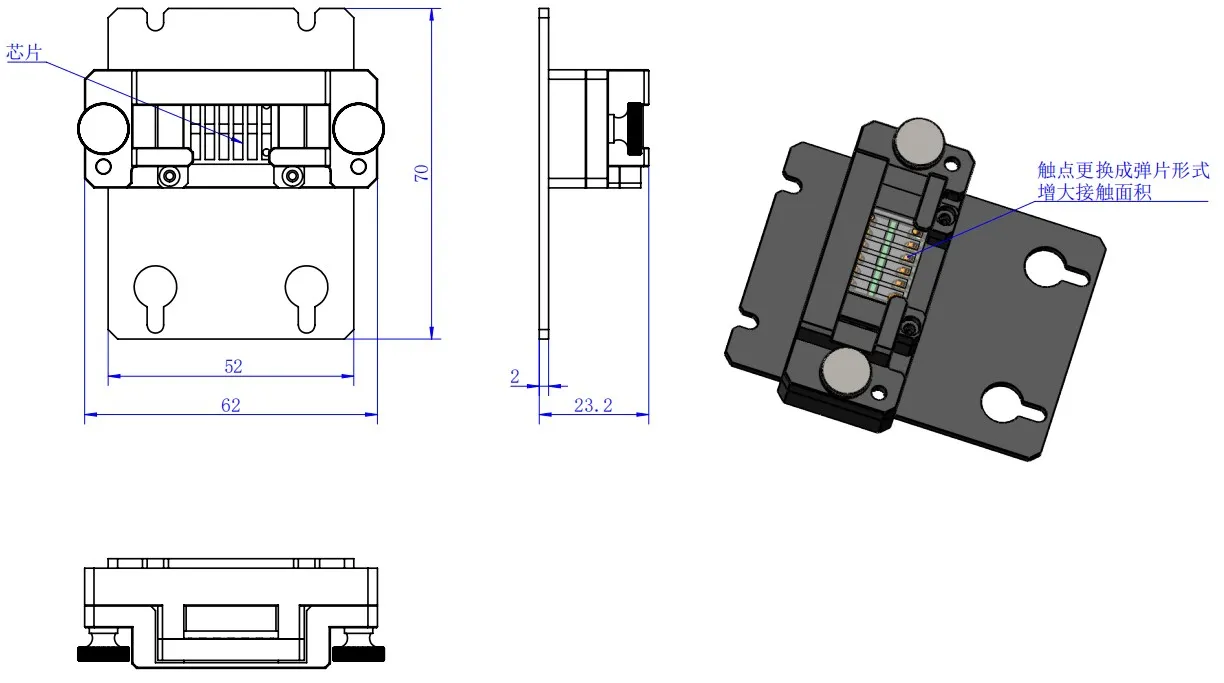
● LS-EQE-AS-SZPT02
The LS-EQE-AS-SZPT02 fixture has an overall height of 70.8 mm, with a base diameter of 70 mm and height of 10 mm. The fixture has a screw on the upper part, which can be rotated to adjust the height of the chip sample to be tested, meeting different height requirements. The chip sample tested with this fixture is the same perovskite chip as in the LS-EQE-AS-SZPT01, with a luminescent area of 2 mm * 2 mm and outer glass encapsulation of 20 mm * 15 mm, with six electrodes. The leftmost electrode is the positive (or negative) electrode, and the others are negative (or positive) electrodes. The dedicated circuit board lights up the chip sample to be tested. This fixture is used for vertical measurement in the electroluminescent quantum efficiency system.
This fixture is mainly for perovskite materials and can be used in the fields of photovoltaics, semiconductor devices, photocatalysis, and other electronic devices such as sensors and field-effect transistors (FETs).
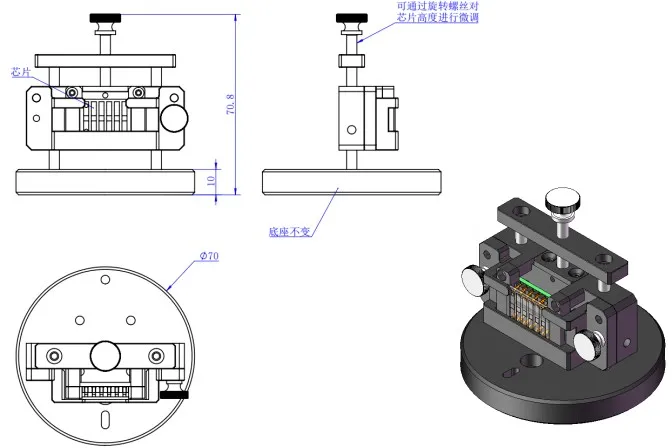
● LS-EQE-AS-SUDA01
The LS-EQE-AS-SUDA01 fixture has an overall width of 67 mm, length of 70 mm, and thickness of 23.2 mm. The contact point is replaced by a top pin form and the circuit board has been replaced. This fixture tests OLED organic material chips. The outer glass encapsulation of the sample chip is 32.90 mm * 32.90 mm, with a luminescent area of 16.4 * 16.4 mm and eight electrodes. The dedicated circuit board lights up the chip to be tested. The upper part of the fixture has two hole structures for fixation, used to install in the electroluminescent quantum efficiency system for testing.
This fixture is mainly for OLED materials and can be used in fields such as mobile devices, automotive displays, digital advertising, medical devices, and aerospace.
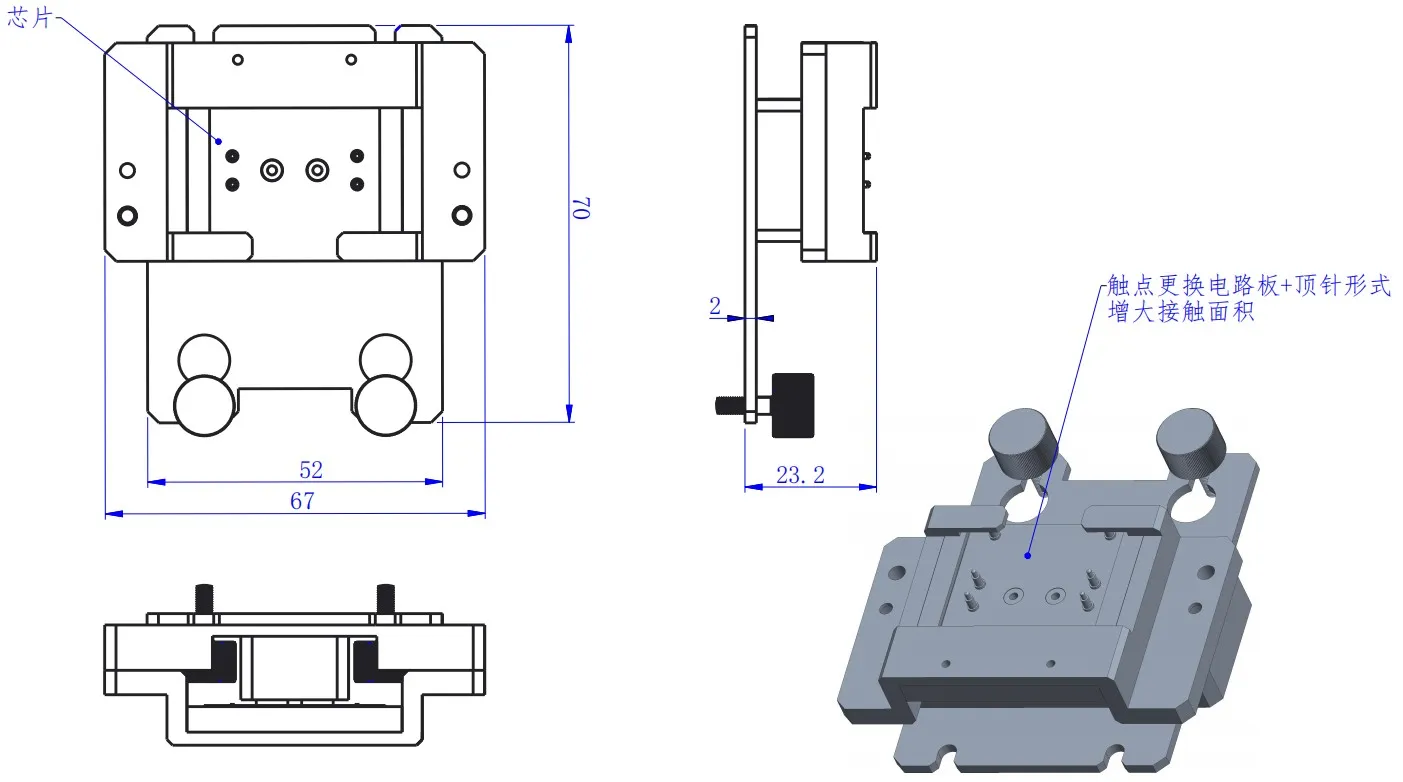
Electroluminescence Sample Fixture Case Display
● LS-EQE-AS-SZPT01
The LS-EQE-AS-SZPT01 fixture has an overall width of 62 mm, length of 70 mm, and thickness of 23.2 mm. The contact point is replaced by a spring form to increase the contact area. The sample tested is a perovskite chip with a luminescent area of 2 mm * 2 mm. The outer glass encapsulation of the sample chip is 20 mm * 15 mm, with six electrodes. The leftmost electrode is the positive (or negative) electrode, and the others are negative (or positive) electrodes. The dedicated circuit board lights up the chip sample to be tested. The upper part of the fixture has two hole structures for fixation, used to install in the electroluminescent quantum efficiency system for testing.
This fixture is mainly for perovskite materials and can be used in the fields of photovoltaics, semiconductor devices, photocatalysis, and other electronic devices such as sensors and field-effect transistors (FETs).

● LS-EQE-AS-SZPT02
The LS-EQE-AS-SZPT02 fixture has an overall height of 70.8 mm, with a base diameter of 70 mm and height of 10 mm. The fixture has a screw on the upper part, which can be rotated to adjust the height of the chip sample to be tested, meeting different height requirements. The chip sample tested with this fixture is the same perovskite chip as in the LS-EQE-AS-SZPT01, with a luminescent area of 2 mm * 2 mm and outer glass encapsulation of 20 mm * 15 mm, with six electrodes. The leftmost electrode is the positive (or negative) electrode, and the others are negative (or positive) electrodes. The dedicated circuit board lights up the chip sample to be tested. This fixture is used for vertical measurement in the electroluminescent quantum efficiency system.
This fixture is mainly for perovskite materials and can be used in the fields of photovoltaics, semiconductor devices, photocatalysis, and other electronic devices such as sensors and field-effect transistors (FETs).

● LS-EQE-AS-SUDA01
The LS-EQE-AS-SUDA01 fixture has an overall width of 67 mm, length of 70 mm, and thickness of 23.2 mm. The contact point is replaced by a top pin form and the circuit board has been replaced. This fixture tests OLED organic material chips. The outer glass encapsulation of the sample chip is 32.90 mm * 32.90 mm, with a luminescent area of 16.4 * 16.4 mm and eight electrodes. The dedicated circuit board lights up the chip to be tested. The upper part of the fixture has two hole structures for fixation, used to install in the electroluminescent quantum efficiency system for testing.
This fixture is mainly for OLED materials and can be used in fields such as mobile devices, automotive displays, digital advertising, medical devices, and aerospace.

Prev: no data!
Send Inquiry
